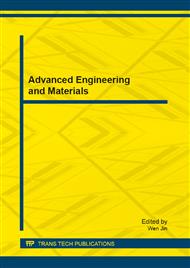p.490
p.494
p.499
p.502
p.511
p.520
p.525
p.531
p.535
Adapting Optimal Operation Strategy for the Chiller Plant of a Semiconductor FAB
Abstract:
In a semi-conductor FAB, the chiller plant is a major drain of power among the supporting facilities. According to ISMI, the air-conditioning system consumes a quarter of the total electricity supply of a semi-conductor Fab, even more for some older Fabs. Thus, cutting down the power consumption of the chiller plant becomes extremely important to save energy. Therefore, a study was made to achieve 3% power reduction for the chiller plant. The purpose of this paper is to report the strategies used for the power reduction through testing, adjusting and balancing, and TAB. The strategies included: development of an experimental model for the chillers’ performance, the establishment of energy-efficient operational strategies, the enhancement of cooling tower energy efficiency, and conducting a full-scale experimental investigation. The development of this experimental model utilizes the ASHRAE Guideline 14-2002 as a tool, and is integrated with the BEMS system to perform a remote real time online energy auditing system, within which an intelligent operational strategy has been implemented.
Info:
Periodical:
Pages:
511-519
Citation:
Online since:
February 2013
Authors:
Keywords:
Price:
Сopyright:
© 2013 Trans Tech Publications Ltd. All Rights Reserved
Share:
Citation:


